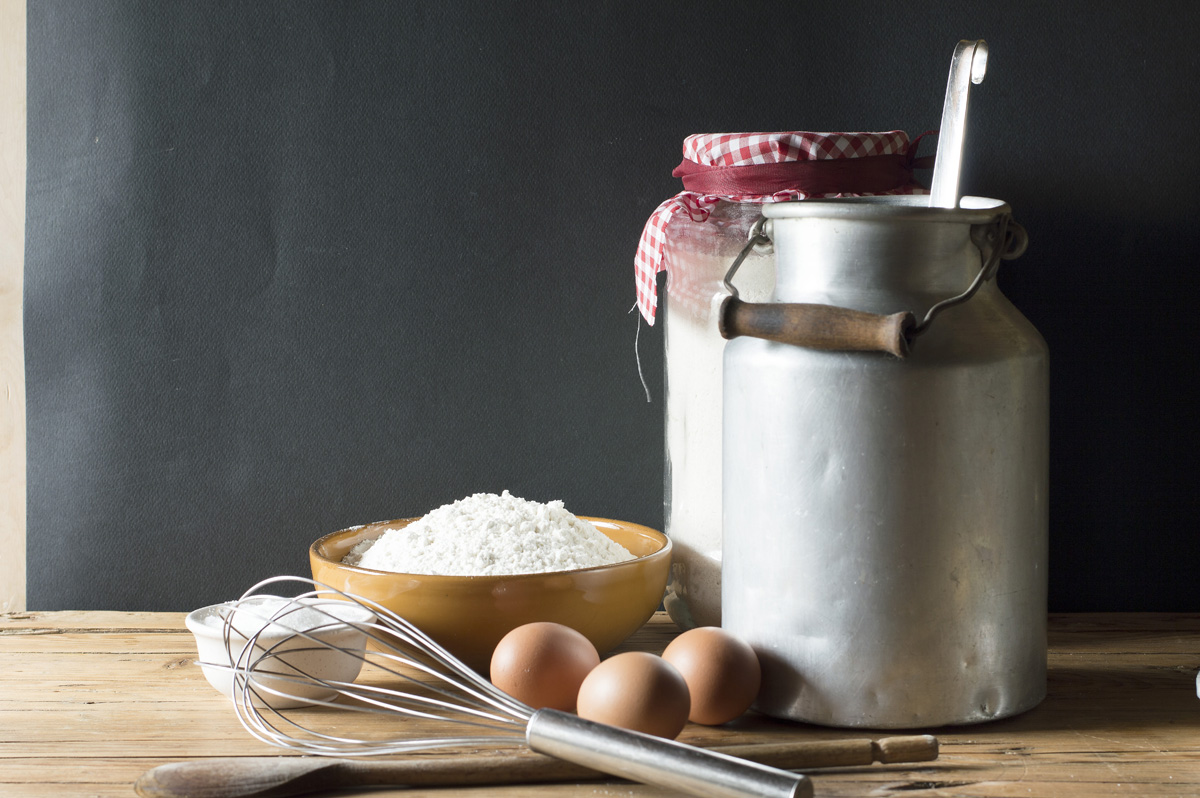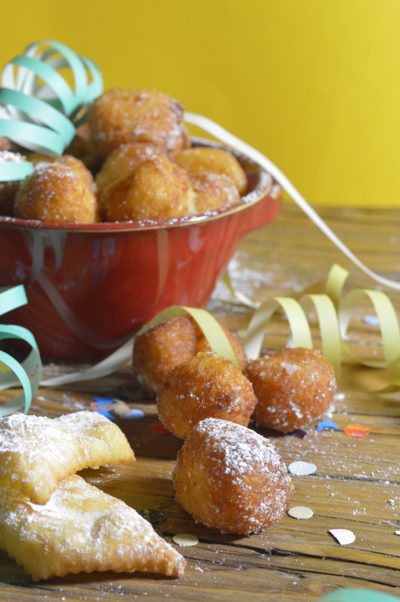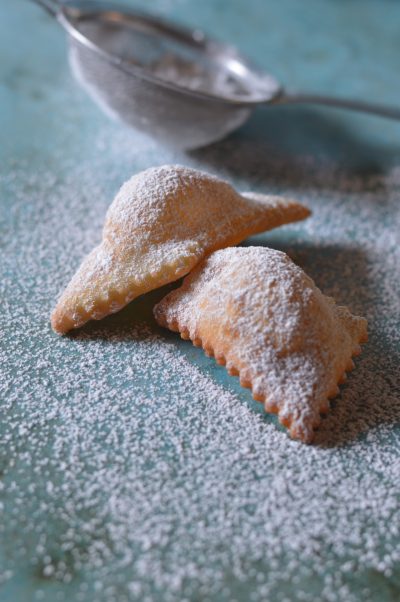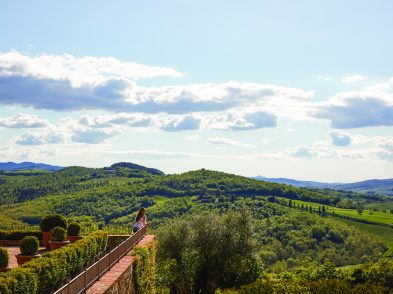Carnival is a much-loved festive season throughout Tuscany and all towns celebrate it during the month of February. It’s a centuries-old festival, when everyone is allowed to eat excessively, play excessively and be a bit silly for a day. Typical carnival masquerading exemplifies the idea of turning social standards upside down and doing away with conventions. Streamers, masks and confetti symbolize the carnival season in Tuscany, along with fried sweet treats cenci and frittelle. Cenci are diamond-shaped cookies made from flour, sugar, butter and eggs, whereas frittelle are sweet balls of rice, mixed with eggs, flour, a little leavening agent, and raisins or pieces of apple, or plain, fried in a deep pan. Carnival is a source of childhood memories, as Francesco Sorelli explains in La Toscana di Ruffino: The Taste of Being Together: “In February, with the arrival of Carnival, I used to ask my grandmother to make two traditional seasonal desserts: cenci and frittelle. I loved both of these desserts – as did all my friends who would come to say hello, particularly the cenci.”

The Recipes
Frittelle di riso

Ingredients
400g risotto rice, such as Arborio / 1.5 liters full-fat milk / 4 tbsp superfine sugar + 250 g to decorate / Pinch of vanilla-flavoured baking powder / Pinch of salt / Zest of 1 lemon (one long piece) / 20g melted butter / Grated zest and juice of 1 orange / 4 eggs, separated / 1/2 tsp cream of tartar / 100g sultanas / Dash of liqueur (brandy or similar) / Peanut oil, for frying
Method
Boil the rice in the milk in a large saucepan with the sugar, vanilla baking powder, salt and lemon zest. Cook until all the milk has been absorbed, stirring continuously so that it does not stick to the bottom. Leave to cool and carefully remove the lemon zest. Add the egg yolks, sultanas, orange zest and juice, a dash of brandy or similar liqueur, cream of tartar and melted butter. After mixing together, whisk the egg whites to stiff peaks and fold in without letting the air out. Pour plenty of peanut oil into a cast-iron frying pan and bring to a boil. Spoon the mixture into the boiling oil and fry for a few seconds on each side. Drain and leave on paper towels. Roll the frittelle in the remaining sugar until well coated.
Cenci

Ingredients
300g flour / 1 tsp vanilla-flavoured baking powder / Pinch of salt / 75g superfine sugar + 250 g to decorate / 2 eggs / 1 liqueur glassful of Ruffino Serelle Vin Santo del Chianti / Grated zest and juice of 1 orange / 30g butter, melted / 2 drops vanilla extract / Peanut oil, for frying
Method
Sift the flour, baking powder and salt onto a rolling board, mix in the sugar and make a well in the center. Add the eggs, Ruffino Serelle Vin Santo del Chianti, orange zest and juice, vanilla extract, melted butter into the center. Use your hands to mix the ingredients. Knead vigorously to make a smooth, compact dough. Cover the dough in plastic wrap and leave to stand for 30 minutes in the fridge. Split into two parts and roll out each piece with a rolling pin to less than half a centimeter thick. Cut into diamonds and fry in piping hot oil until golden brown. Roll the cenci in the remaining sugar until well coated.
+ Pair these carnival treats with
Ruffino Serelle Vin Santo del Chianti

Dating to the Middle Ages, vin santo has always held pride of place in Tuscan winemaking. There are many stories about wine’s etymology. One version attributes its origins to a 14th-century friar who handed out among the sick the wine he’d used at Mass (hence the “santo”, meaning “holy”), trusting in its therapeutic and miraculous virtues. Another story claims that Vin Pretto (or “pure wine”), a local wine that no longer exists, was served to the Greek patriarch John Bessarion on his visit to Florence in 1349. On drinking it, Bessarion exclaimed, “This wine is from Xanthos!” (a Greek island). But the Italians around him interpreted the word as “santo” and started to call the old Vin Pretto “Vin Santo”. Myth and legend aside, the origins of the name probably have much to do with the fact that the wine was used during religious rites.
+ Where to taste Ruffino wines this month
Chianti Classico Collection
(February 12, Stazione Leopolda, viale Fratelli Rosselli 5, Florence)
Chianti Lovers
(February 10, Fortezza da Basso, viale Filippo Strozzi 1)
Benvenuto Brunello
(February 15-18, Museo Civico e Diocesano d’Arte Sacra, Montalcino)
And don’t forget… Ruffino’s flagship winery Poggio Casciano is open for cellar tours, tastings and wine shop purchases.
Via Poggio al Mandorlo 1, Quarate-Bagno a Ripoli (Florence)
Reservations recommended: hospitality@ruffino.it
Tel. Silvia +39 342 0425730 / Greta +39 344 3912004 – www.ruffino.com








